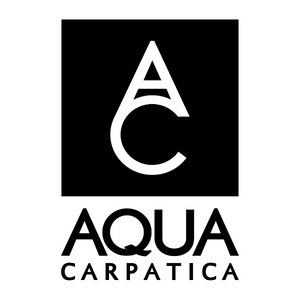Before sitting down at the table during the González Byass UK portfolio tasting in London, I had asked Beronia’s winemakers from Rioja and Rueda to bring along a new wine to discuss. Marian Santamaría and Alejandro López wanted to present something unexpected, so they brought the two wines they plan to use to surprise UK customers.
“British consumers are getting fussy, asking us to surprise them, asking ‘what’s new from you?’” Alejandro says. “As a brand, our objective is to surprise the consumer. Everyone knows about La Rioja, some of them have heard about Rueda, but very few of them have heard about Gran Vino de Rueda, and very few of them know that there’s also white wine in La Rioja.”
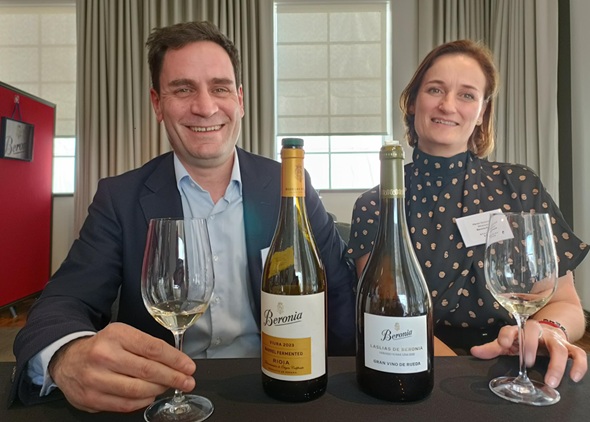
Alejandro and Marian pour their wines: a barrel-fermented Viura from Rioja, and a lees-aged Verdejo from Rueda – two distinctive wines that exemplify Beronia’s commitment to regional expression, varietal character and focus on the details.
Comparing and contrasting the winemaking behind two white wines from Beronia, which has been part of the González Byass group since 1982.
Beronia Rioja Barrel-Fermented Viura 2023

Vintage: 2023
Grape variety: 100% Viura
Alcohol: 13%
pH: 3.3
Residual sugar: 1.6g/L
Months in barrel: 6
Bottled: April 2024
UK retail price: £14.75
Laslías de Beronia 2022

Vintage: 2022
Variety: 100% Verdejo
Alcohol: 13%
pH: 3.25
Total acidity: 5.6g/L
Residual sugar: <1.8g/L
Bottled: August 2023
UK retail price: £20
Both use old vines. One comes from a single vineyard.
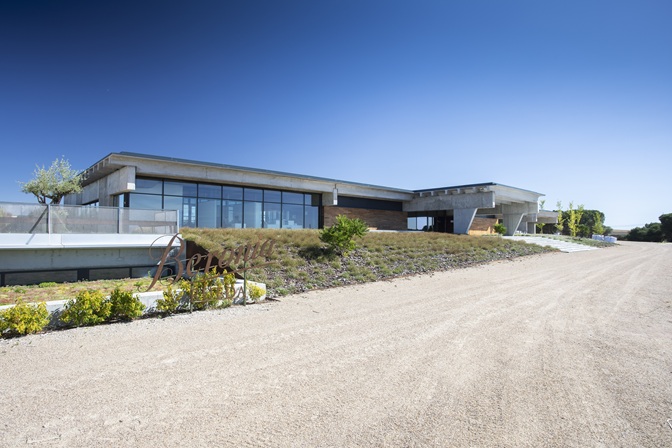
The Rueda wine comes from a single parcel of Verdejo vines more than 70 years old. The selected plot for producing Laslías de Beronia is in Madrigal de las Altas Torres, one of the few municipalities in the province of Ávila that is part of DO Rueda.
The highest category of wine in the region is Gran Vino de Rueda, which must come from vines at least 30 years old and be aged for at least a year. The category was launched in 2021.
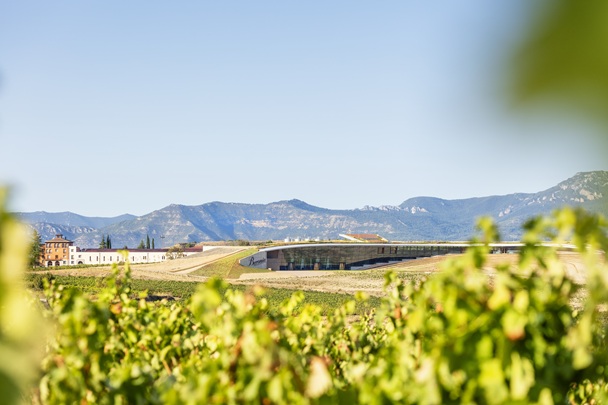
The white Rioja, on the other hand, comes from 15 or 16 plots in Ollauri, Rioja Alta, where the main production is red wines from Tempranillo. The Viura grows around the edges of these old vineyards.
Both the Verdejo and Viura grapes were harvested manually.
Winemaking insights
Alejandro, who took over from Beronia's iconic winemaker Matías Calleja last year, likes working with Viura. This is because it is versatile and has “really good” ageing potential. Hence the drive to make a barrel-fermented style of Viura.The Rioja Viura is also aged in oak barrels, while the Rueda Verdejo utilises both concrete tanks and French barriques.
A key feature of both wines is the extended lees contact, with the Rueda Verdejo undergoing eight months sur lie to gain complexity, rich texture and depth. The Viura gets about six months on lees, with daily bâtonnage for the first month, dropping to three days a week for the next month and perhaps no stirring for the last month to six weeks.
“We do what the wine needs,” Alejandro comments. “The concept is to keep the wine on lees for more or less five, six months, depending on the year. And after that, we move to a tank and we bottle.”
The vinification starts with 14-18 hours’ maceration at about 12°C, and fermentation with either native or cultured yeasts, depending on what happens during the cool soak. Fermentation is in both French (80%) and American (20%) 225L oak barrels, 100% new.
The percentage of American oak varies according to the vintage.
Alejandro says he makes this wine in an oxidative style, so he doesn’t protect the juice from turning brown. “All the things that oxidated during the process are things that are not going to oxidate in the bottle,” he points out.
He believes they will drop out during the clarification period. “It’s my theory and it works, I think.”
Clarification in the tank is with bentonite. Sulphur is only added prior to bottling – once the wine comes off the protective dead yeast. Because of the low pH, total SO2 is around 50-60mg/L.
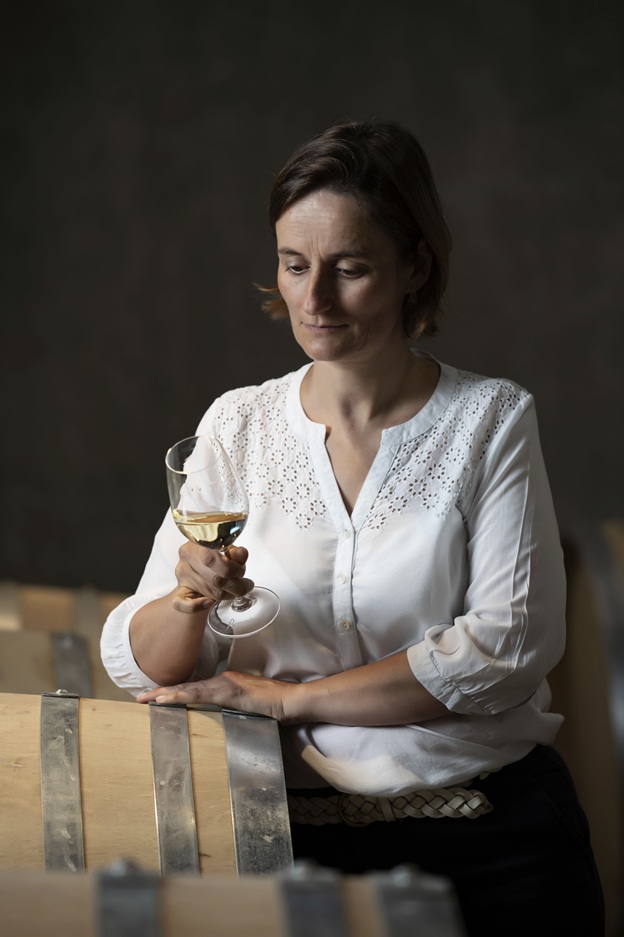
Things are a little different in Rueda. Marian Santamaría (above) works in a more reductive style.
Laslías de Beronia is whole-bunch pressed in an inert environment to preserve the Verdejo’s aromas. Fermentation is usually with native yeasts in old French oak barrels of 500L and 10,000L concrete tanks,
Whole-bunch pressing means the yield is low and the juice is “very clean”.
The must is left to settle for 12 hours. Fermentation temperature in both oak and concrete is 18-20°C.
The final wine is a blend from oak and concrete. Marian says the percentages vary according to the vintage. “Sometimes there’s more oak, sometimes more concrete – it changes every year.”
The blending is to produce a consistent style despite the vintage variations. “That’s the objective,” Marian says, “but it’s a tough job, because it really depends on the liquid you get from the grapes. What we’re looking for is that the wood (oak flavours) doesn’t reach the wine and, above all, we enhance the mineral quality of the wine. The oak is there for structure, not flavour.”
Lees ageing and bâtonnage are also important for Marian, who has been the winemaker at the Rueda winery since it opened in 2017. She tells me: “We work a lot with the lees. Regular bâtonnage in both the concrete and the oak. Every week, every month, and then we taste it.”
Again, this technique means they work with low sulphur levels – adding a little after fermentation and only “correcting” the level to around 70mg/L total when they go to bottle.
After eight months sur lie, the wines from concrete and oak are blended, clarified and filtered before bottling. Laslías de Beronia rests for a minimum of six months in bottle before release.
The style
Although it’s a ‘surprise’ for the UK market, the barrel-fermented Viura is actually a revived style that was made by Beronia until the 2000s, when it dropped out of fashion. But Beronia sees increasing demand for white wines from Rioja. And, as it’s Rioja, some oak flavours are expected.Marian says she is trying to make a Burgundian style wine with her Verdejo. The Gran Vino de Rueda category, launched to give value to old vineyards, changes “the vision we have of only young wines from Rueda, to wines that have a greater capacity for ageing”.
She adds: “We wanted to work on an ageing wine to make more premium wines instead of having just young wines.”
The winemaking philosophy
“Is the winemaking philosophy the same at both wineries?” I ask.Alejandro replies: “We are from different parents but the philosophy and the aim behind the wines is the same. We do not want to have too much oak in the wine, so you can taste the fruit, the variety. We also share the same philosophy in terms of sustainability.”
How do the wines taste?
The Viura from Rioja offers a fresh and fruity profile, while the Verdejo from Rueda provides a distinctive mineral character.On the nose, the Viura presents vibrant tropical and citrus notes with a hint of fennel; the more minerally Rueda Verdejo offers complex aromas of creamy pastry, aniseed, and white fruits.
On the palate, the Beronia Rioja Barrel-Fermented Viura 2023 offers juicy peach and exotic fruit flavours like pineapple, balanced by crisp acidity and a long, fresh finish.
The Laslías de Beronia Verdejo 2022 is rich and elegant, and harmonious, inviting another sip.

 English
English French
French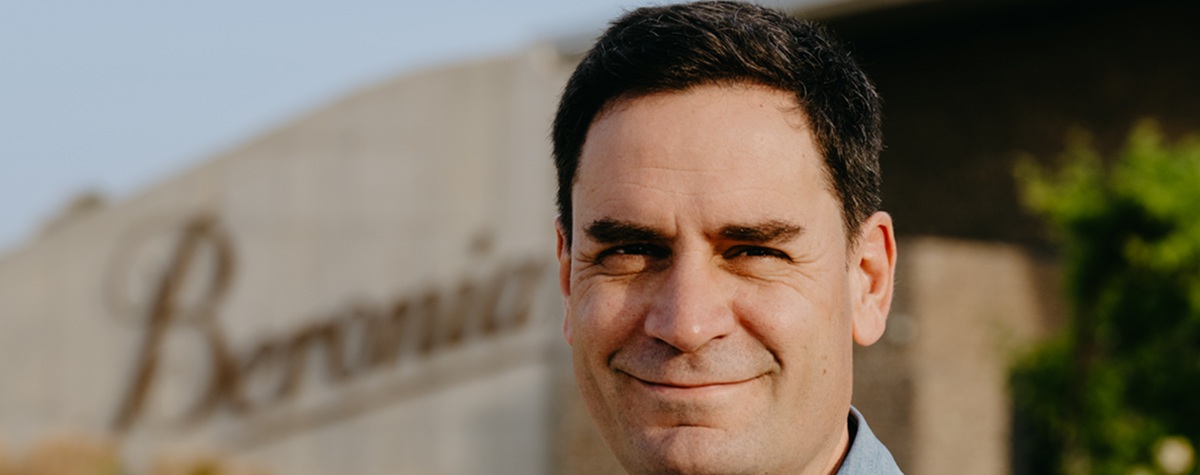


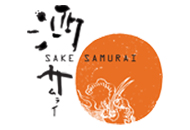
.png)
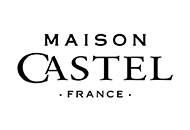

.png)



